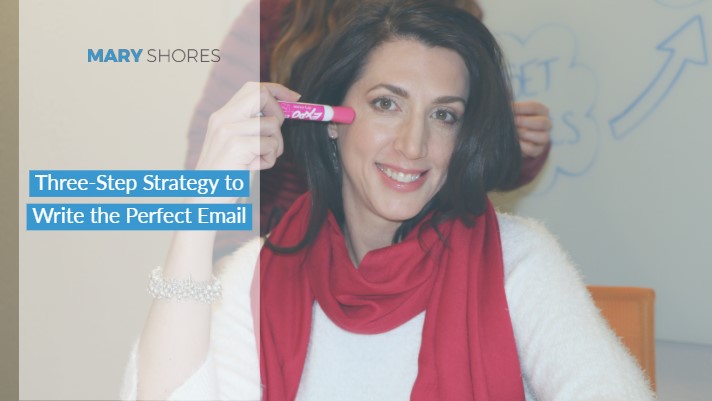Blog
Three-Step Strategy to Write the Perfect Email

How many emails are in your inbox currently? 20? 100? 1,000?
What if I told you there was a way to cut down the time you spend writing emails?
It’s true! There is! And it has to do with the Communication Code.
If you're reading this, you're probably already familiar with my Communication Code. If you're not, it’s all about using words that trigger the parasympathetic nervous system, so we stop creating stress chemicals and start creating happy chemicals. It has transformed our customers’ experiences, our company culture, and our personal relationships. The three steps of the Communication Code are validation, planting seeds of happiness, and saying what you CAN do instead of what you can’t do.
We use the Code in live conversations and in emails too.
Seriously. My team and I use it to craft our emails every day. It reduces the time we spend writing, and it gets us major results.
Having a common communication strategy to fall back on means we spend less time hemming and hawing over how to construct our emails. It also helps ensure all our customers and clients are being treated in line with our values every time.
Because not every employee has the same writing style, right? Everyone communicates things a little bit differently, but having a common email formula ensures all of our contacts have the same experience. Consistency is key.
Here’s how the Communication Code sounds in an email.
Scenario: I’m following up with a potential client who expressed interest in hiring me to do a communication training for his membership.
Step 1: Validate
I start by acknowledging my contact’s needs. This help builds a connection right away.
I understand you want to get this opportunity booked for your membership as soon as possible.
I also let him know I appreciate him sharing the latest development with me.
Thank you for letting me know the board approved my training proposal.
Step 2: Plant seeds of happiness
Next, I want my contact to feel confident that I’m going to get the job done.
You’re in great hands, and I can’t wait to get started!
Step 3: Provide an action statement
Finally, I focus on moving things forward, and I share what’s going to happen next.
I want to get this training scheduled for you as soon as possible. Please let me know what dates you're interested in.
Other Pro Tips
Make sure the reason for your email is clear in the beginning – Don’t wait until the end of the email to share the reason for your correspondence. People are busy. Your email is most likely going to be skimmed. Make it a clear and easy read.
Always talk in terms of next steps – Make sure you and your contact know what the next steps are. No one wants to be stuck in email limbo land, unclear of what his or her role is or what's going to happen next. In the above example, I would also include a line that says, Once the training dates are set, we can talk logistics, and I can send you my contract.
Try these strategies out and let me know what differences you see!
Do you have your own strategy for tackling a flooded email inbox? What is it? I’d love to hear from you!
To view this article as originally published, visit MaryShores.com